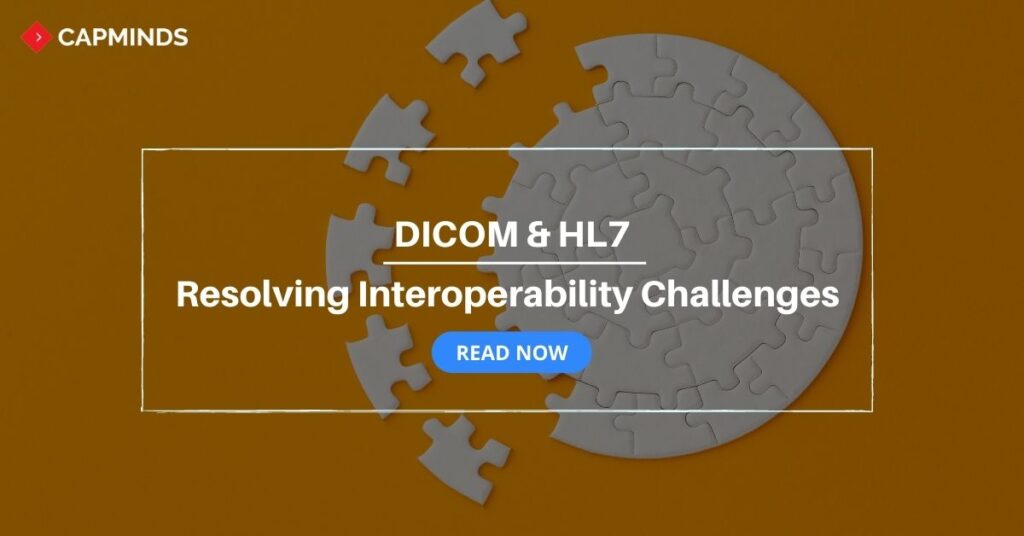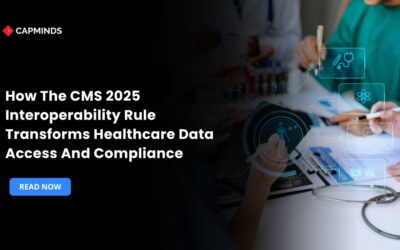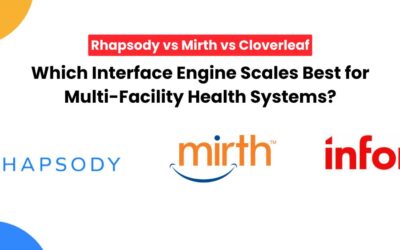HL7 & DICOM: Resolving Interoperability Challenges
DICOM (Digital Imaging and Communications in Medicine) is the standard for the communication and management of medical imaging information and related data.
It offers healthcare the ability to store, transfer, and process medical images and patient health data. But along with the advantages, it sometimes comes as a challenge for attaining interoperability. Today we will look into two main standards- HL7 & DICOM that ease interoperability in healthcare.
RELATED: Case Study: Integrating HL7, FHIR, & API Capabilities with CapMinds
Interoperability Challenges
Interoperability challenges come in different ways. Let’s see some practical examples.
- Say a patient is seriously ill and desperately needs treatment at another clinic. He/she wants their health data to be transmitted from the current clinic to the other immediately. And these two facilities use two different standards and the systems do not understand each other. This pushes the patient to recover their records in paper format. In the worst cases, they may have to take the tests again. This may result in mental pressures and health deterioration for the patient.
- Say you own a health business. Need to pass on patient data to a hospital or an imaging operator. If you and your partner use different standards, your system will face errors or be not able to communicate at all. The unwillingness to switch old systems may cause you to lose your partner.
RELATED: Top 5 HL7 Integration Challenges and Solutions for 2022
DICOM & HL7: The common similarities
HL7
- HL7 can sometimes be used as an alternative to DICOM MWL.
- It is a transaction-based protocol and is guided by events like the admission or discharge of a patient.
- The encounters result in the creation of “unsolicited events” and transfer them to the other end of the connection to whoever is on the other end.
- It is a standard that is flexible which is why it is a common guide like protocol for many healthcare facilities.
- It is frequently customized.
- HL7 files are larger due to the character-based encoding (the change of pixel data to characters)
DICOM
- DICOM is a client-oriented protocol
- Like when using MWL (Modality Worklist) imaging equipment sends a request to an MWL server to get a worklist.
- DICOM is much more rigid than HL7.
- With MPPS (Modality Performed Procedure Step) the DICOM can give more precise & real-time data about performed diagnostics.
DICOM & HL7: The institutional similarities
HL7
- Offers many types of memberships.
- Repeatedly conducts conferences and workgroups.
DICOM
- The use depends on the software or equipment one buys.
- Educates their customers but only to a smaller extent.
DICOM & HL7: Resolving Interoperability Challenges
Even with their own domains HL7 and DICOM connect with each other. Both protocols try to resolve compatibility issues to benefit the customers. Software developers have found customizable health apps that can connect these protocols.
These applications solve the two partner-two systems challenge with full compatibility. With this solution, patient health data can be easily transmitted, realized, processed, and managed.
HL7 Services from CapMinds
CapMinds Technologies offers the perfect all-in-one health interoperability solutions for your clinical needs. Our HL7 FHIR services help the innovatory exchange to create new possibilities. Our client-centered services keep them in the limelight. Our clinical integrations have EHR-integrated laboratory, imaging, e-prescriptions, EPCS, pharmacy, and much more. These enhance the activation process for your individual and collective needs.
“CapMinds Technologies is the place that will make you achieve your goals by combining “Expertise+Hardwork+Commitment”.
CapMinds FHIR services cover your health data with more security, privacy, and confidentiality. We update ourselves with the latest versions like HL7 Version 2, Version 3, FHIR, SMART on FHIR, CDA, X12, Mirthconnect, and security standards. CapMinds offers the best HL7 integration & HL7/FHIR interface development services for the federal government, health tech startups, laboratories, clinics, and practices.
“Unite with us to overcome interoperability issues with our HL7 services and rise to be the first”




